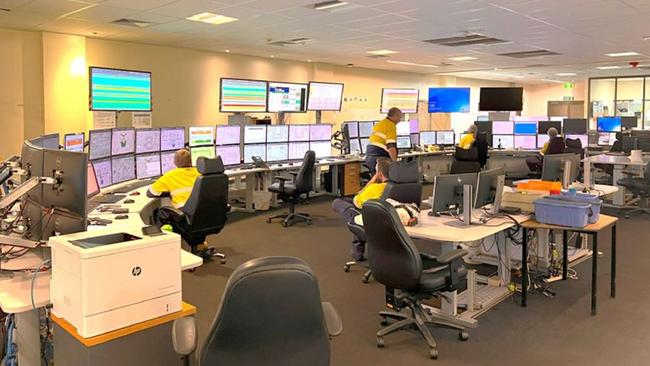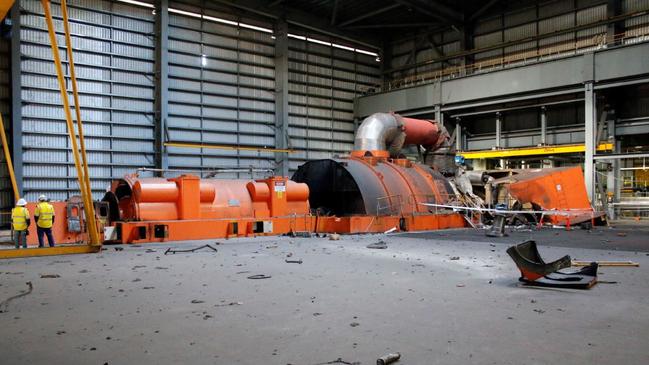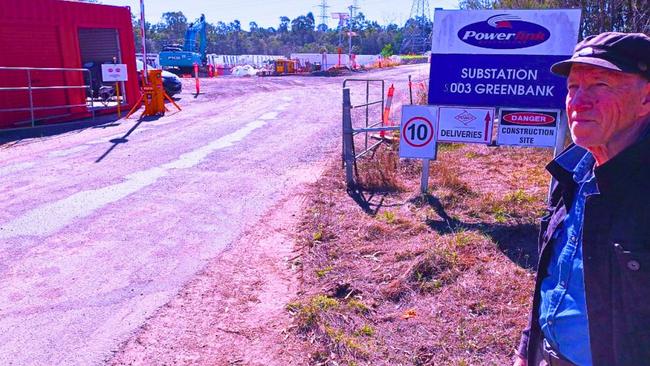Damning report sparks safety concerns for Greenbank Tesla mega battery
A damning report on the Callide C4 explosion has raised serious safety concerns among Greenbank residents regarding the upcoming Tesla battery facility’s safety protocols.

Logan
Don't miss out on the headlines from Logan. Followed categories will be added to My News.
A damning report into a “catastrophic” explosion at CS Energy’s Callide C4 power station has sparked concerns for a southside suburb, where the energy company is building a Tesla mega battery power bank.
The Brady Heywood report, undertaken by forensic engineer Dr Sean Brady and released last week, investigated errors at CS Energy’s Callide power station in 2021, when an explosion knocked out parts of the state’s power grid.
It found CS Energy had substantive and longstanding issues with systems critical for safety and found the Callide incident was not “unique”.

“Rather, (the incident) it was consistent with an organisation that did not value or practise effective process,” the report said.
The report also found that there was substantial damage to the surrounding areas with a piece of metal, weighing more than two tonnes, being thrown 5m across the floor of the turbine hall.
Another piece of equipment, weighing 300kg, was rocketed into the air, punching through the turbine hall roof and shattering the turbine generator, with the report claiming it resulted in widespread damage to the surrounding environment.

The findings from Callide raised alarm bells with Greenbank residents, who say the report backed their claims that the Tesla mega power battery was “dangerously” close to homes, childcare centres and a church and there was a lack of safety practices in place.
Greenbank resident electrical mechanic Bruce Fraser, who heads up the New Beith Power Liaison Group, said the report highlighted critical risks associated with the Greenbank Battery Energy Storage System, known locally as BESS, which is due to open next year on Pub Lane at Greenbank.
Mr Fraser said it emphasised the dangers of placing 3000 tonnes of volatile lithium cells within metres of homes.

He said despite three meetings between the residents and the battery stakeholders, there had been no proof of stringent safety protocols in place.
“The Callide C4 incident exposed a failure in process safety that could potentially repeat at Greenbank, endangering 20,000 residents and costing millions,” he said.
“If there is an explosion at Greenbank when it opens, the entire suburb will have to be locked down and there are not enough roads to give residents adequate escape routes.
“It is not just the safety protocols on the ground – we have been told that we are also at the mercy of relying on satellites to inform Tesla in the US that there is a fire or a safety breach, before the Queensland Fire Department is alerted.
“There is no contingency evacuation plan for neighbouring properties and the report questions the safety and reliability of CS Energy’s protocols.”
Mr Fraser said if a megapack fire broke out at Greenbank that the emissions would be far worse than a structural fire and would require trained specialists wearing hazmat suits and would be out of the hands of a local fire department.
He said Greenbank residents had called on the state government and CS Energy to undertake a comprehensive risk review to evaluate the dangers of toxic emissions from a lithium fire.
Greenbank residents have called for a safety review since 2021, when a massive fire broke out at the country’s largest Tesla mega battery site at Moorabool, near Geelong, when a 13-tonne lithium battery in a shipping container exploded.
It took more than 30 fire trucks and support vehicles and about 150 firefighters two days to stop the fire and contain it from spreading to nearby batteries.
The first large documented Battery Energy Storage System (BESS) fire in Queensland was at Griffith University in March 2020, with other fires at Townsville. There were no injuries.
A third Tesla battery energy storage system fire was 500m from the nearest house and burned for days at Bouldercombe, south of Rockhampton, in September last year.
In a statement, CS Energy said the Tesla Megapack 2XL units at Greenbank were “one of the safest battery storage products of their kind” and an incident requiring an emergency service response at Greenbank was unlikely.

It also said it was working closely with Tesla on the Greenbank battery, its second project after completing a similar power storage system at Chinchilla, which started operating this year.
“Megapack fires are extremely rare,” CS Energy said. “Testing shows that if one occurs, Megapack safety systems can control and contain a fire within a unit.
“The resulting gases from a Megapack fire would be similar to those released from a typical structure fire of a building or other infrastructure.
“For our first battery project, the Chinchilla Battery, we conducted a thorough commissioning and testing process, and provided training and site familiarisations for local emergency services.
“The Greenbank Battery will go through the same rigorous testing and commissioning process as Chinchilla.
“We will undertake a detailed operational readiness program, which will include employee training, critical risk assessments, and safety and design reviews.
“During the design phase for Greenbank, we worked with industry experts to peer review our safety protection and fire systems including consulting with Queensland Fire and Emergency Services.
“CS Energy will also provide training and site familiarisation for local emergency services at Greenbank prior to operations commencing.”

Tesla Megapacks are made using lithium iron phosphate, also known as lithium ferro phosphate, LFP, or LiFePO4, which is a different battery chemistry from lithium ion (Li-ion) batteries often used in personal devices such as mobile phones, laptops or electric bikes.
LFP batteries explode at 170C, higher than other lithium batteries at 80C.
The Greenbank battery, supported by the state government, will have a 200 megawatt discharge of power and is expected to be operational next year.
Originally published as Damning report sparks safety concerns for Greenbank Tesla mega battery




